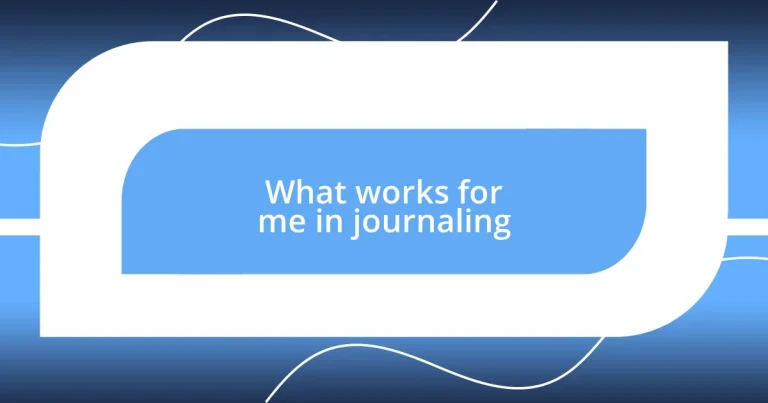Key takeaways:
- Journaling helps untangle emotions, sparks creativity, and reflects personal growth.
- Effective techniques include free writing and gratitude journaling, which foster self-discovery and positivity.
- Progress tracking through past entries, monthly check-ins, and visual representation enhances emotional understanding and personal development.
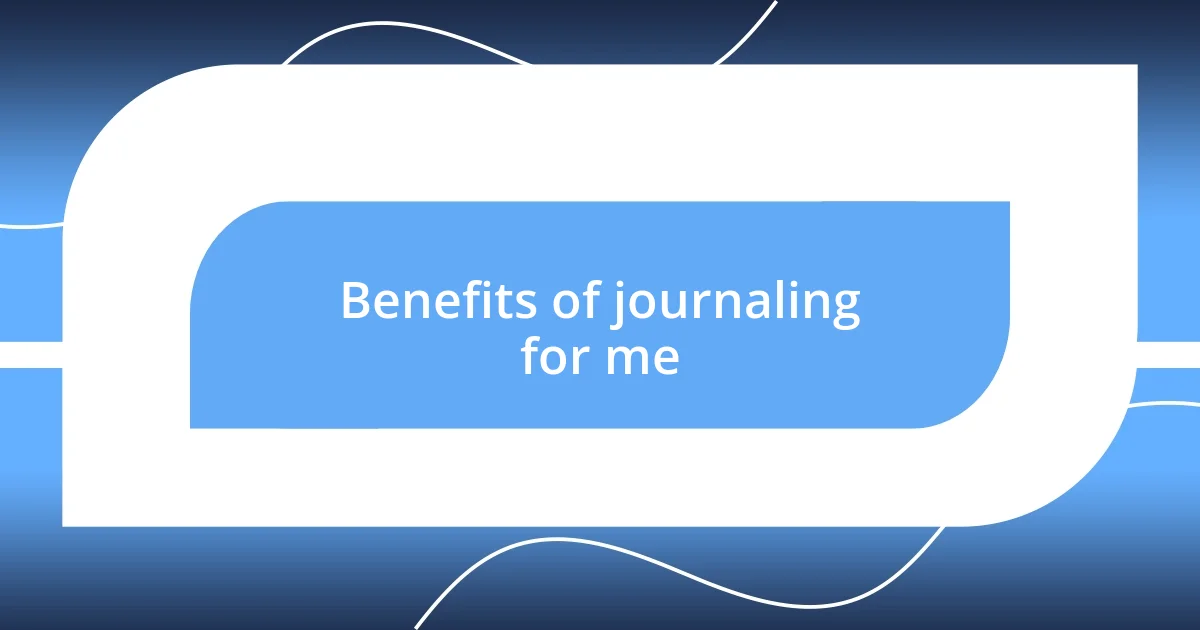
Benefits of journaling for me
Journaling has been a game changer for me, especially during stressful times. I remember a particularly challenging week when everything seemed overwhelming. Pouring my thoughts onto the page helped me untangle those messy emotions, bringing clarity and calm that I desperately needed.
One benefit I truly appreciate is how journaling sparks creativity. I often find myself jotting down random thoughts that unexpectedly morph into ideas for projects or stories. Have you ever noticed how your mind works differently when you write without a filter? It’s freeing and can lead to surprising breakthroughs!
Finally, I’ve found that journaling acts as a mirror for my personal growth. Reflecting on my entries over time, I can see how my perspectives have shifted and what lessons I’ve learned. It’s fascinating to witness my journey unfold on those pages. Isn’t it rewarding to recognize how far we’ve come?
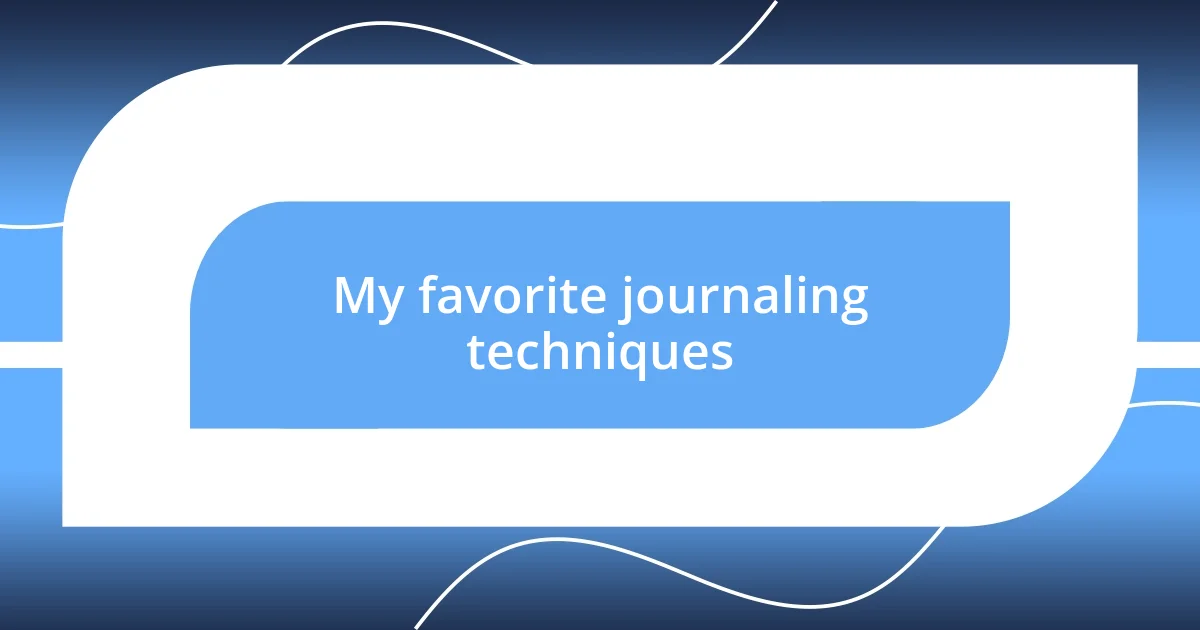
My favorite journaling techniques
One technique that I absolutely love is free writing. I usually set a timer for 10 minutes and just let my hand fly across the page, no judgments, no edits. It’s amazing how this practice not only cleanses my thoughts but often leads me to discover hidden desires or worries I wasn’t consciously aware of. On some particularly emotional days, this technique has felt like a necessary release, helping me process my feelings more thoroughly.
Another favorite method is the gratitude journal. Each evening, I take a moment to reflect on three things I’m grateful for that day. This simple act shifts my attention from stressors to the positive aspects of my life, creating a more balanced outlook. It’s like a gentle reminder that even in tough times, there’s always a silver lining. Here’s how I approach it:
– Daily Reflection: I write three specific things that brought me joy or gratitude.
– Tangible Moments: I often describe the details, like the warmth of my coffee on a chilly morning.
– Positive Affirmations: Sometimes, I add a personal affirmation to inspire myself for the next day.
With both techniques, I find that they enrich my journaling experience and deepen my understanding of myself.
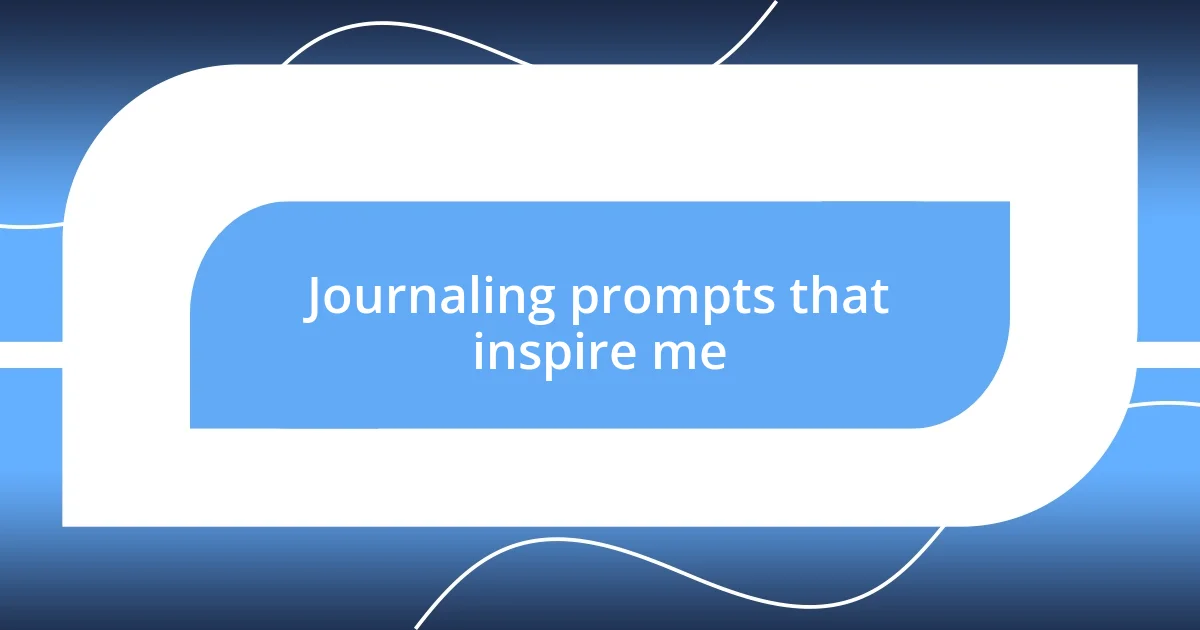
Journaling prompts that inspire me
Journaling prompts that inspire me often come from moments of introspection. I remember a time when I asked myself, “What does success look like for me?” Writing down my thoughts unleashed a flood of aspirations and goals I hadn’t fully acknowledged. It was enlightening to explore my definitions of success beyond societal expectations, leading to a deeper understanding of who I want to be.
Another prompt I find particularly motivational is, “What do I want to let go of?” This question resonates with me, especially during transitions or when I’m feeling weighed down by negativity. I once filled pages reflecting on an outdated belief about myself, and the act of releasing it onto paper felt incredibly liberating. It’s transformative to visualize shedding those self-imposed limitations and embracing a more authentic self.
Lastly, I cherish the prompt, “What am I excited about right now?” Asking this encourages me to focus on the present moment and the little things that spark joy. I recall a phase when planning a small trip turned into a joyous exploration in my journal. Writing about my excitement turned mundane details into rich, vivid experiences, allowing the zest of anticipation to fill my days leading up to the adventure.
| Prompt | Focus |
|---|---|
| What does success look like for me? | Exploring personal definitions of success |
| What do I want to let go of? | Identifying and releasing negativity |
| What am I excited about right now? | Focusing on present joys |
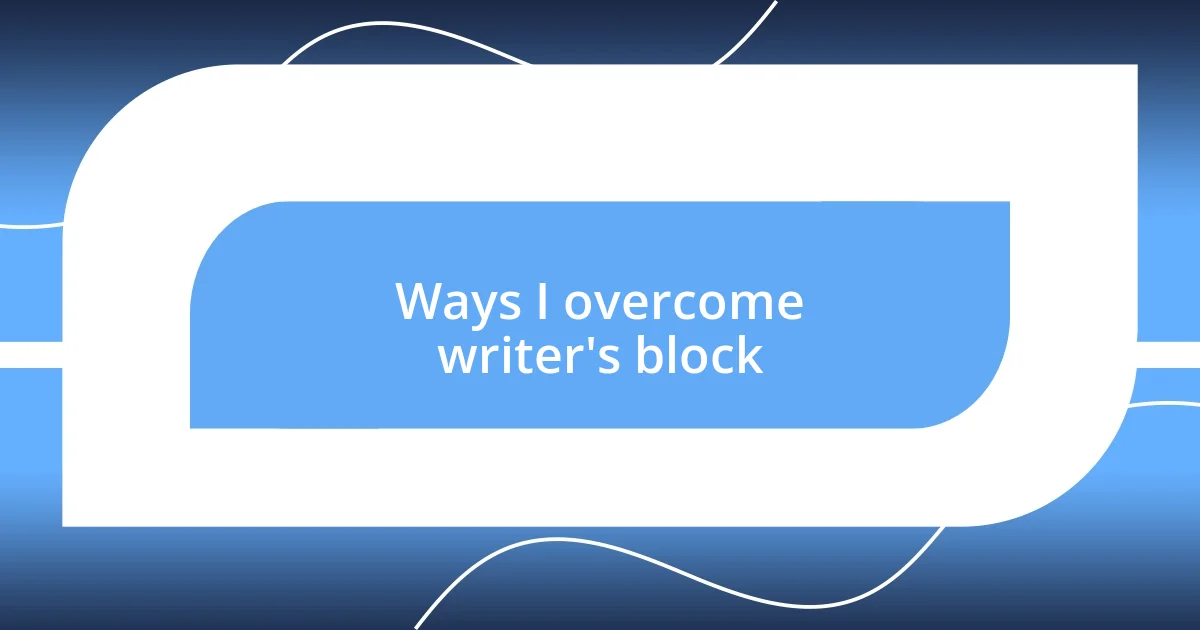
Ways I overcome writer’s block
Sometimes, when I hit a wall with my writing, I turn to a simple yet effective technique: stepping away. I’ll go for a walk, letting my mind wander freely. On one of these walks, I once noticed how the leaves danced in the wind, and suddenly I was flooded with ideas for my next journal entry. It’s incredible how a change of scenery can reignite creativity and help dissolve that pesky block.
Another approach that works wonders for me is brainstorming without any restrictions. I grab a blank sheet and jot down every single thought related to my topic—no filtering, no judgment. It reminds me of a time I unleashed a torrent of ideas about dreams and aspirations. Once I got everything down, I could see patterns and themes emerge, which provided a clear direction for my writing. When was the last time you let your thoughts run wild?
I also embrace the power of collaboration. Sometimes, I bounce ideas off a friend or even share snippets from my journal. I remember sharing my thoughts about a recent challenge I faced. Their fresh perspective often sheds new light on my block, making me realize that there’s always someone who can help me see things differently. Have you ever considered that your writer’s block might just need a new pair of eyes?
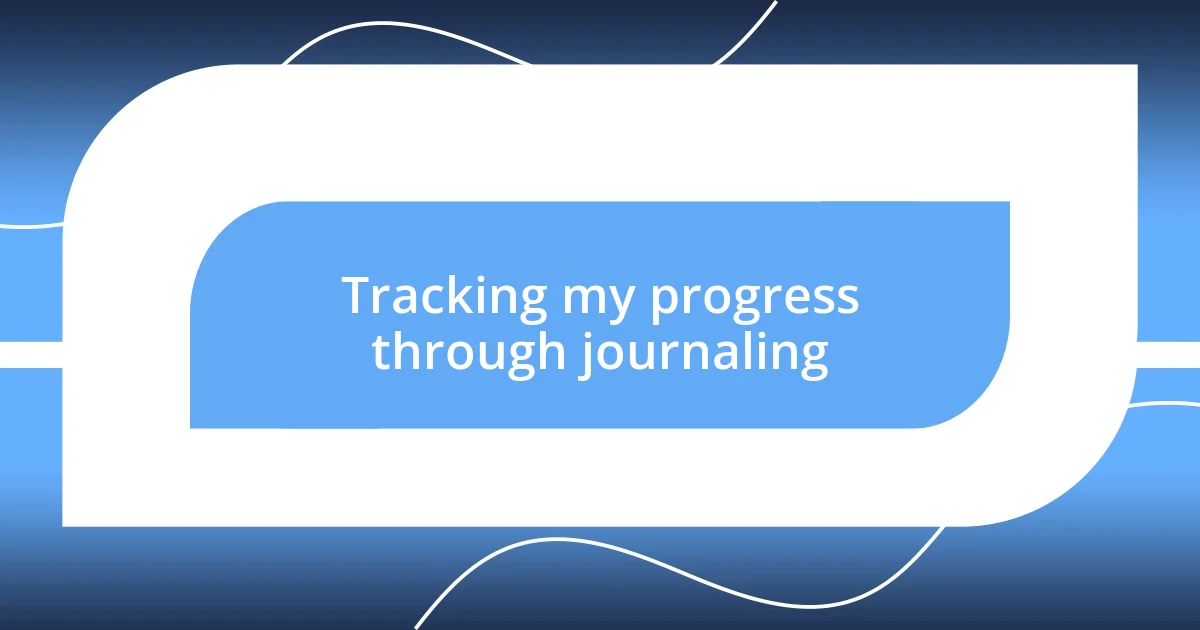
Tracking my progress through journaling
Tracking my progress through journaling has become a pivotal part of my personal growth journey. I often look back at past entries, and it feels like reading snippets of my own evolution. One time, I stumbled upon a journal from six months ago where I expressed doubts about a major career decision. Reflecting on that moment now, with a sense of clarity and achievement, reinforces just how far I’ve come. It’s a powerful reminder that growth is often gradual but tangible.
I also like to set specific markers to gauge my progress. For instance, I use monthly check-ins where I assess my goals and the feelings associated with them. I vividly remember one month where I felt overwhelmed and lost; but reviewing my entries revealed small victories I initially overlooked. It’s amazing how tracking my emotions alongside my accomplishments has given me a more nuanced perspective on my journey. Have you ever realized that small steps can lead to significant change?
Another technique I utilize is visual representation. Occasionally, I create charts or mood boards based on my journaling insights, which help me see trends over time. The first time I visualized my stressors and joys side by side, it dawned on me just how interconnected they were. That revelation was a game-changer; it encouraged me to focus more on cultivating joy while managing stress. This blend of creativity and self-reflection not only tracks progress but also enhances my understanding of my emotional landscape.












